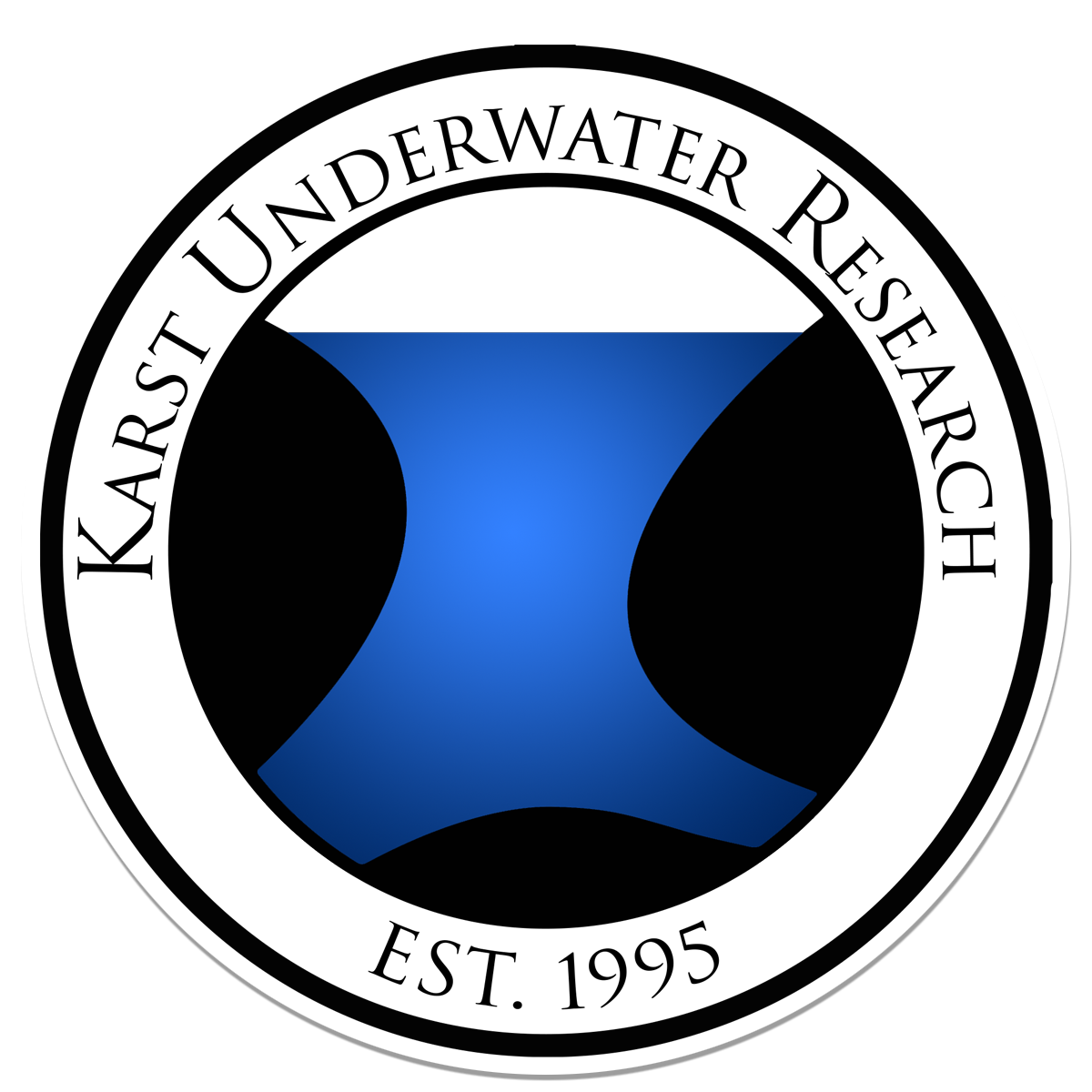Mill Creek Sink: the property was donated in 1993 to and is owned by the National Speleological Society but is managed by the NSS-CDS (Cave Diving Section). Access is restricted to a guide network and while Mill Creek is not a KUR project, many KUR members participated in its cartography and exploration and are guides.
Karst Underwater Research and the NSS-CDS are Not For Profit organizations invested in the conservation of our karst terrain and have enjoyed a symbiotic relationship for many years. Several members of KUR serve on the Board of Directors of the NSS-CDS and nearly all KUR team members are also participating members of the CDS. Most notably: Sam LeFlore, Adam Hughes, Andy Pitkin, Charlie Roberson and Renee Power. While both groups work to protect Mill Creek, it was the NSS CDS that played a critical role as the site’s steward.
Mill Creek Sink (Alachua Sink) is an offset sink and is the only known, accessible window to the Alachua cave system which has a draining basin of over 70 miles. The extent of which is known due to water dye tracing experiments done to track, map and protect the spring and aquifer. The site is extremely sensitive to rain and run off due to the 50 foot drop to the water and often the basin visibility makes it unsafe to dive. The cave contains extremely fine, scalloped sheets of limestone and delicate flow formations seldom found in such pristine condition. The clay bank (pictured) is still perfect after 40 years of exploration.
A max depth of 227 feet, restrictive passageways and the fragility/complexity of the site make it an advanced cave dive accessible only to the properly trained and adequately experienced cave diver. The management plan executed by the NSS-CDS is restricted to science and research diving and each dive at Mill Creek requires forms to be completed and waivers to be signed.
It was big news in Alachua, city and county. Wal Mart had been working to open a Super Center SE of the intersection of 75 and 441–the proposed site was 155 acres across 441 from Mill Creek Sink. In 2015 it was already a 9-year-old project but the retailer finally had a tentative approval contingent on a rezoning. The city rezoning was challenged by Alachua County and adjacent landowners, including the NSS, on a variety of grounds including failure to provide proper notice of the hearing. With the backing of various environmental organizations and Alachua County, the adjacent landowners were able to negotiate some important water draining and storage conditions as well as other ecological concern mitigations. As the parties worked through all of the construction and site prep plan improvements, they also addressed the Murphy fuel station location relative to the cave conduit. In the end, with all the moving parts and escalating costs to develop the property to Alachua County’s requests, Wal Mart selected a nearby location.
TJ Muller, Charlie Roberson and other NSSCDS/KUR members provided valuable data and research to assist Alachua County in preserving Mill Creek Sink, Mill Creek and the preserve for future generations. While Wal Mart did elect to change the location the availability of the scientific research proved extremely valuable in creating site additions to minimize any aquifer impact.
TJ cited a critical piece was the availability of dye tracing data collected by the NSSCDS in 1976 and 2006. The tracing connected Mill Creek Sink to Hornsby Spring, 6 miles away. Hornsby is a a tributary water source for the Santa Fe River which has Florida’s most prominent river designation: “Outstanding Florida Waterway”. This award adds to the importance of its protection and the protection of its water sources. Including Mill Creek Sink. Understanding the water exiting Hornsby Springs comes, in part, from water that drains from the developed areas surrounding Mill Creek Sink and Creek aids in preserving the resource, and thereby the quality of the water the surrounding residents use.
Mill Creek Sink has been a fun walk down memory lane for us at KUR and many of the explorers that came before. We have received quite a few photos, stories and history over the last few weeks and wanted to share one from Brian Williams that came in via email. Currently, as the Program Manager for the Dan River Basin Association, Brian works on conservation, restoration and education projects with local and state governments and private organizations throughout the southeast. He has authored numerous papers on subjects including; herpetology, fish production, cave exploration, recreation opportunities on local rivers and streams and the award-wining Trout in the Classroom Program in Southwest Virginia
“I saw that (first) post, very cool. I don’t have anything to add really, I just hope new divers will always study the history of cave diving and especially these sites in FL. I do remember us putting up quite a fight when the Walmart was proposed to be built across the road and basically over the cave. Cindy Butler, myself, Kelly Jessop, and other were involved in speaking out and gathering data from other Walmart sites, run-off, etc. Probably have to research Gainesville Sun archive to get the articles.
And those steps, that was a dam job! Looks like most of the original steps we built have been reworked? Looks great.
I dived it several times with Cindy and Al and did support on a couple of their longer dives, wished I had of spent more time there, actually.
Here’s a few pics, some of mine, most of these are probably Cindy’s. I have more somewhere but couldn’t find them right now.”
Watch for an update in the future

